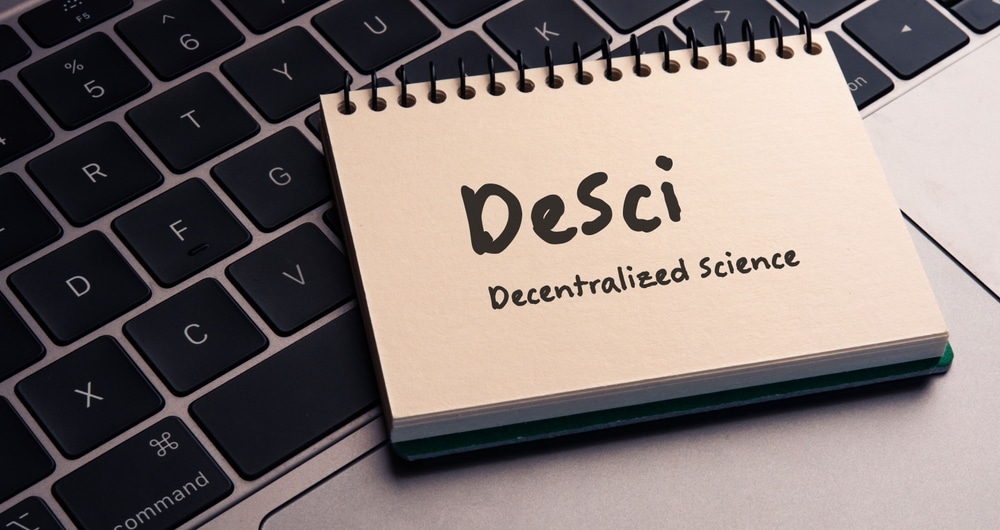From supporting the creation of cryptocurrencies to enabling fast and cheap cross-border payments, blockchain technology is proving to be a significant innovation in today’s world. Its latest use case is decentralized science (DeSci), a new way of conducting scientific research and study.
Read our comprehensive guide to learn more about decentralized science.
DeSci Defined
Decentralized science is a new sector in the crypto world that aims to utilize blockchain technology to reshape how scientific research is done. The idea is to decentralize the scientific model to promote accessibility and transparency. That means researchers across the globe can come together and share their findings on a particular topic.
As a blockchain-powered sector, DeSci uses various Web3 tools, such as decentralized autonomous organizations (DAOs) and smart contracts, among others.
The Rise of DeSci
DeSci has been introduced to address the limitations of traditional science (TradSci), which is largely centralized. For instance, while researchers in the DeSci sector publish their findings within a short time, those in TradSci may take months or even years to publish their study. Moreover, traditional researchers place paywalls on their projects, creating a barrier to access. But in DeSci, researchers make their discoveries accessible to everyone with access to the internet.
Key Components of Decentralized Science
Here are the components that enable DeSci to function as expected.
Blockchain Technology and Open Science
The decentralized nature of blockchain ensures no central entity has control over the shared research data. Furthermore, it offers a collaborative and transparent environment that facilitates open science, in which anyone can contribute to a certain study.
Additionally, blockchain keeps records of immutable data accessible to the public. This means DeSci participants can track research history.
DAOs
Most DeSci projects have DAOs that allow them to collaborate with no central authority. Since DAOs decentralize power, they enable DeSci protocols to democratize the way scientific studies are done.
For instance, if a DeSci project wants to research new treatments for a specific disease, members of the DAO vote on how their contributions to the study will be rewarded. After that, they can collaborate freely.
How Decentralized Science Works
Many DeSci projects share these features:
Smart contracts: To enforce rules of interactions, DeSci protocols use automated programs called smart contracts.
Communities: DeSci projects seek to build communities around certain study interests. This allows community members to collaborate and freely share resources.
On-chain funding: DeSci protocols raise funds onchain to finance their research. Since the public sees the raised amount, this promotes transparency.
Ownership: Researchers in DeSci retain ownership rights to their contributions, which are stored on the blockchain.
An Example of a Major DeSci Project
Several DeSci platforms exist. NobleBlocks is one of the most popular. This project has decentralized publishing and democratized access to academic journals and research findings. All information shared on NobleBlocks by various researchers cannot be tempered as it is recorded on the blockchain.
How NobleBlocks Works
The process of publishing research findings on NobleBlocks involves these steps:
1. Article submission: Researchers visit Nobleblocks.com to submit their projects, which must have a title and abstract.
2. Preliminary assessment: In this stage, editors confirm the originality of the submitted articles, with those plagiarised getting rejected.
3. Recruitment of reviewers: Here, editors look for qualified reviewers in the reviewer database and ask them to go through the submitted articles.
4. Peer review: Selected reviewers check the quality of the articles and provide recommendations. The reviewed articles are then sent to their authors, who are required to make the necessary changes.
5. Second article submission: After adjusting their articles, authors resubmit them for a second review.
6. Publication: If the editors and reviewers accept the articles, then publication is the next step. The projects will be published and archived on the blockchain.
Conclusion
While many scientists are not crypto natives as of 2024, decentralized science still has a massive potential to grow in the future, thanks to its ability to foster collaboration among researchers and make research findings available to the public for free.
At Tokenhell, we help over 5,000 crypto companies amplify their content reach—and you can join them! For inquiries, reach out to us at info@tokenhell.com. Please remember, cryptocurrencies are highly volatile assets. Always conduct thorough research before making any investment decisions. Some content on this website, including posts under Crypto Cable, Sponsored Articles, and Press Releases, is provided by guest contributors or paid sponsors. The views expressed in these posts do not necessarily represent the opinions of Tokenhell. We are not responsible for the accuracy, quality, or reliability of any third-party content, advertisements, products, or banners featured on this site. For more details, please review our full terms and conditions / disclaimer.

